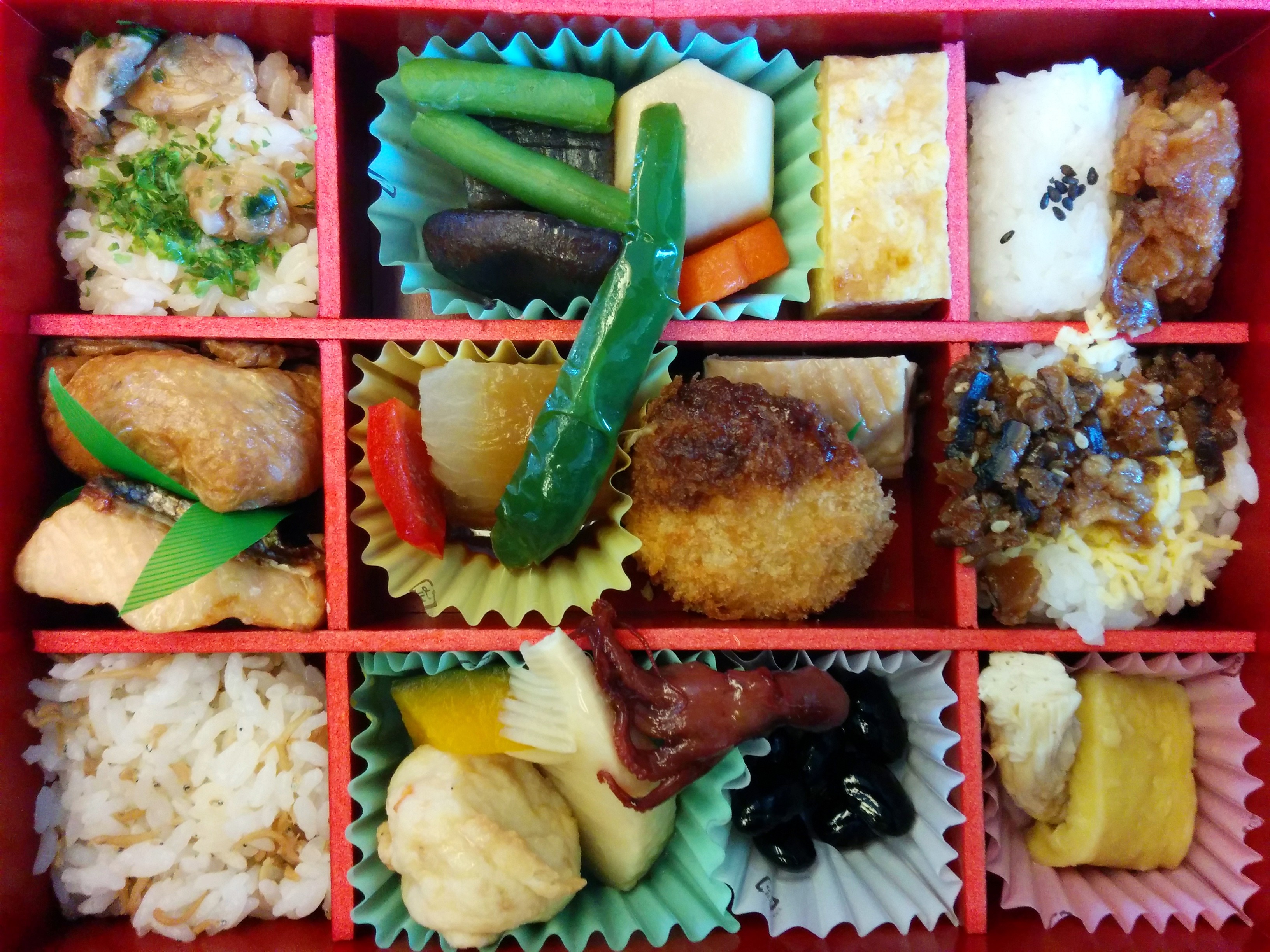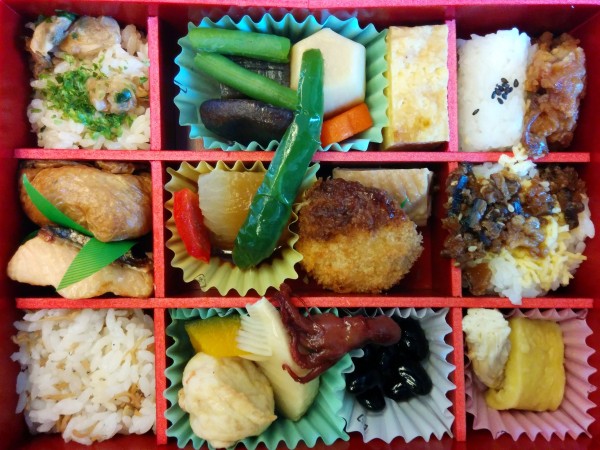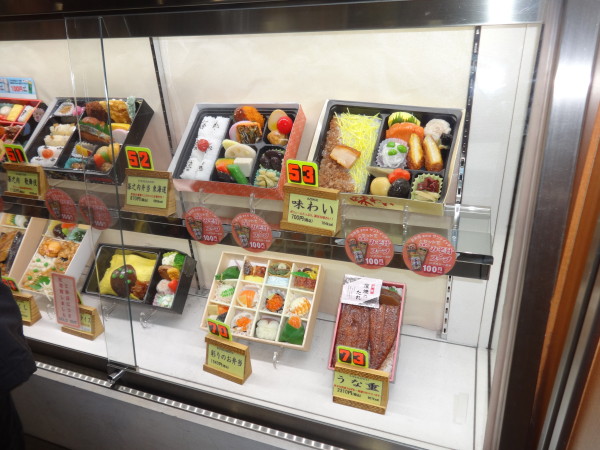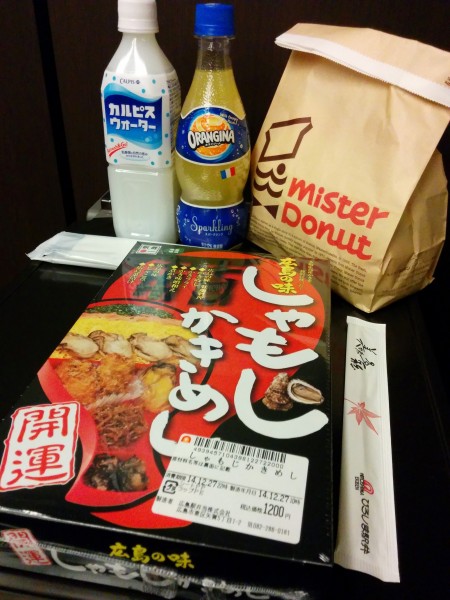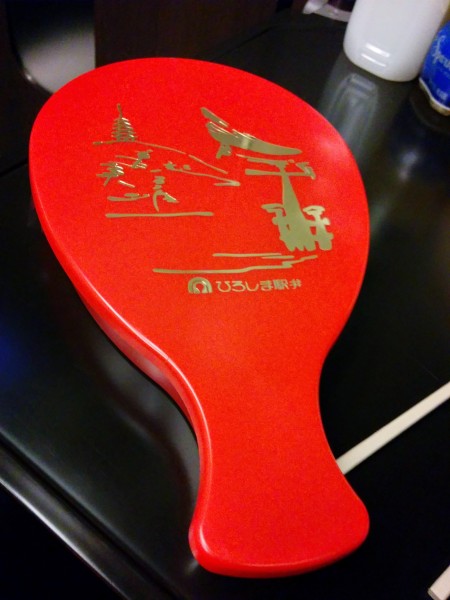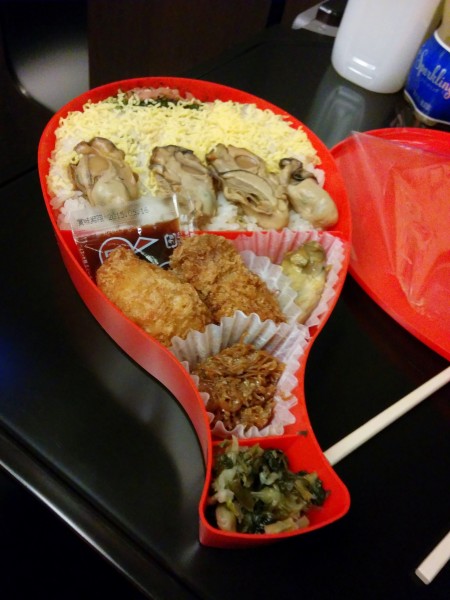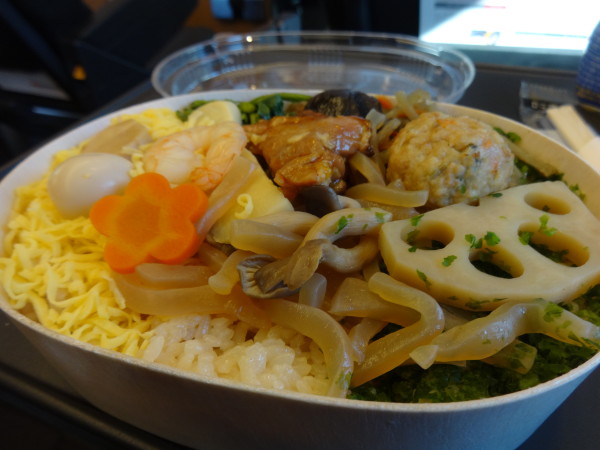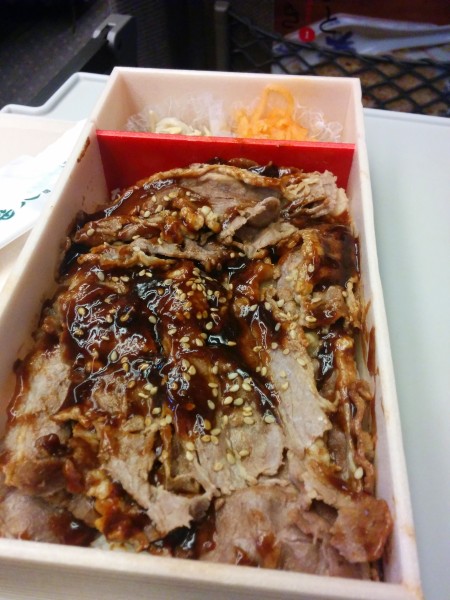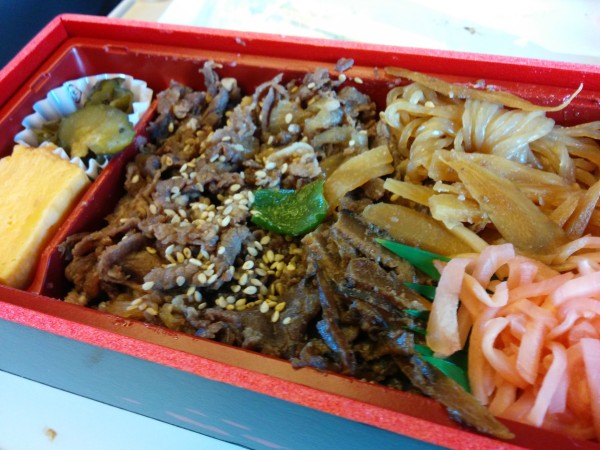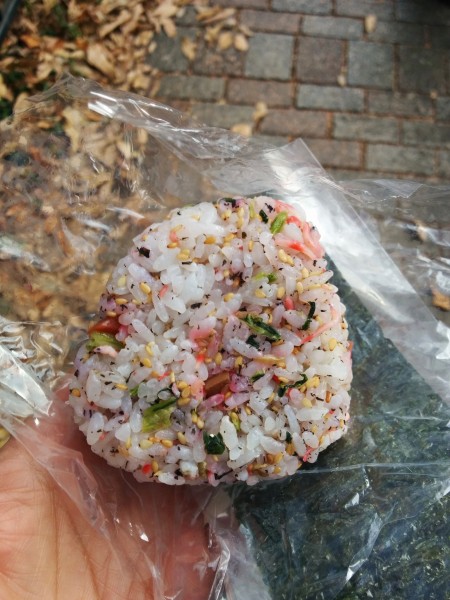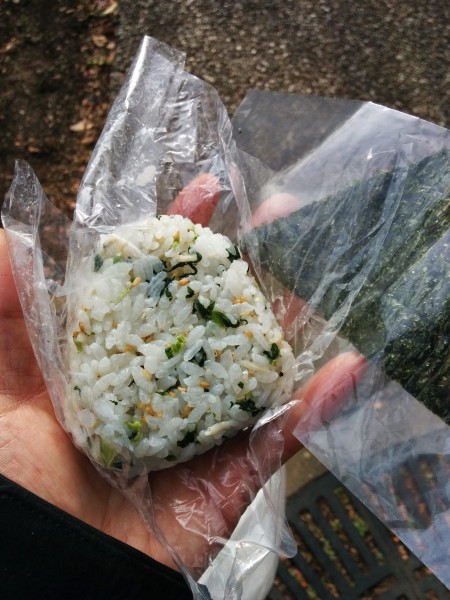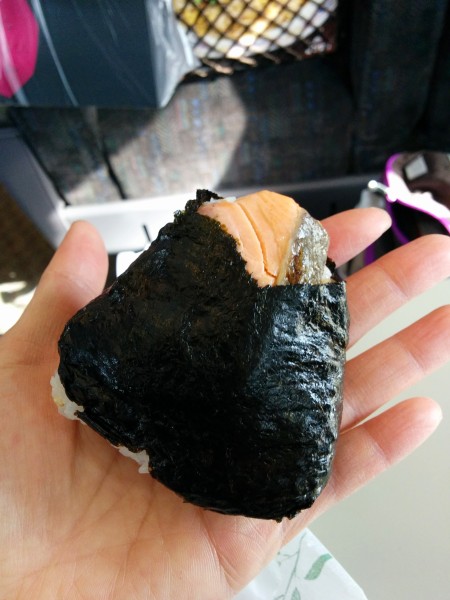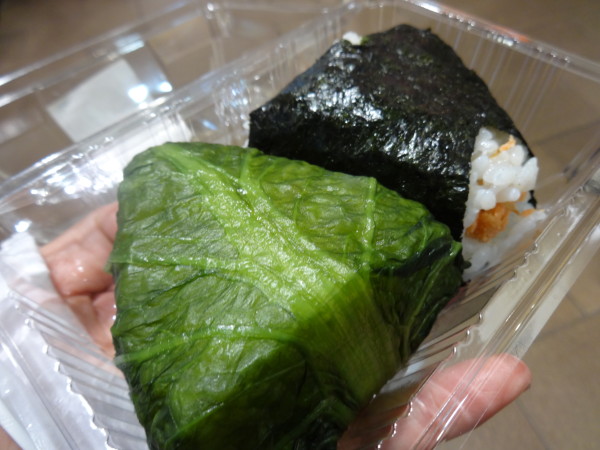Although taking leftovers to-go from a restaurant is not common practice (try not to ask for it as restaurant staff may freak out wondering how to fulfill your request), the Japanese have pretty much perfected the art of the train meal.
In Taiwan, the train bentos were all pretty similar and got a little too salty and greasy for me pretty quickly. In Japan, every train station has it’s own special regional lunch box meal. These special meals are called “ekiben”, which is a combination of the word for train station “eki” and a shortened version of the word for lunch box “bento”.
My crew and I were on a quest to try as many different ekibens as possible, although I definitely didn’t get to eat as many of them as I’d like. Here’s another awesome way to make the most of the Japan Railway Pass, traveling all over the place from station to station just to try all the different ekiben offered. It makes me wish I had studied abroad in Japan in college so I could have written a book or blog on ekiben for fun.
Probably the most unique one out of the ones I had was a ekiben I purchased down in Hiroshima featuring their local specialty of oysters. As you can see, I decked out the whole thing with Mister Donuts and yummy drinks.
The shape of the bento container really weirded me out. I wondered why anyone would want a bento in the shape of a fan.
But when I opened the thing and held the “fan” by the handle upside down with the rice facing me, it seemed clear to me that this was made this way to make it easy to eat while on the go. I just held the round part of the “top” of the fan-shaped bento to my mouth and I could shovel the food in with no problem.
After coming out of some pretty strict dieting right before the trip, I found most of the bentos overall to have too much white rice and would have liked for there to either be some brown rice or lower-carb alternatives, but of course, all the walking and hiking meant the carbs were not only burned but needed energy. Everything was pretty tasty, but after awhile, it was bothering me how much packaging trash came with those ekiben, especially with most of them made from styrofoam. At least that fan-shaped one from Hiroshima was re-usable, and I actually used it as my refillable bento box for a while on the trip. I read that there are some pretty unique bento containers, such as actual bamboo stalks or large shells. I didn’t happen to get my hands on any like that, but that’s definitely something I’ll look for in the future.
If an ekiben is too much food at once, too expensive (some of them go up to about $20 USD), or too hard to eat in your travel situation, I suggest going from my favorite on-the-go Japanese food–onigiri. These are little balls of rice, often triangular-shaped, with all sorts of fillings and mixes. My favorite thing to do in Japan is to buy fresh made onigiri off the streets or at train stations. There used to be a market in Little Tokyo LA that sold fresh made onigiri that were delicious, but that has since turned into a Nijiya that only sells pre-packaged onigiri. In Japan, there was no shortage of fresh onigiri.
Speaking of all this delicious food, one of the best sources for quick, delicious, and affordable eats all of Japan are the convenience stores, coming up next.
